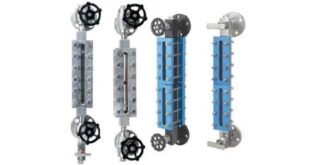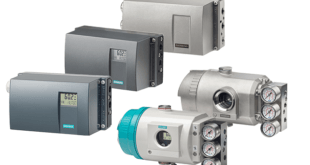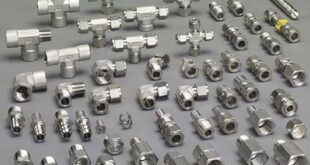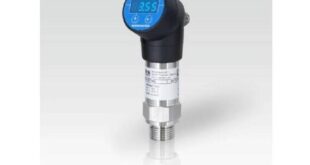What is thermowell, types of thermowell, types of materials, types of connections and use of thermowell, manufacturing of thermowell
What is thermowell?
Thermowells are hollow tubes that are closed at one end and ribbed at the other end. They are permanently placed in pipes or tanks so that temperature measuring probes are placed to measure the temperature of the contents inside the pipe. It is also an enclosure used to protect a temperature sensor probe (RTD or thermocouple) from exposure to hazardous substances or extreme environments.
The ASTM Society defines the term thermowell as a closed-end insertion tube designed to accommodate a temperature-sensitive element, which is designed to be securely attached to a vessel.
Principles of thermowell operation
The thermocouple acts as a barrier between the process environment and the sensor of the temperature measuring device. This barrier protects the sensor from corrosive process environments as well as pressurized or high-velocity flow environments. The thermowell also allows the temperature sensor to be easily removed from the system for maintenance by keeping the system closed.
Why should you use Thermowell?
If the measurement is not critical to plant safety or production efficiency, and if the process fluid is not aggressive or hazardous, a sheathed industrial thermometer made of stainless steel 304 or 316 may be inserted into the line without the use of a thermowell through suitable compression fittings. be a tube or tube in the plant. Obviously, in this case, the thermometer cannot be removed while the plant is running, and if there is a measurement problem, maintenance is delayed until the process is stopped and the line is evacuated and secured.
What types of thermowells are there?
Thermowell is available for use in all instrumentation and temperature control products including: thermometers, thermocouples, RTDs, temperature recorders and temperature controllers.
Connections: Thermocouples are available in a variety of process connection models. Geared connections are most commonly used in 1/2, 3/4 and 1 NPT. Types of socket weld, welding, RF flange connection are also available. Bimetal thermowells are supplied with a 1/2 size NPSM connection to reduce the pressure inside the thermowell.
U-LENGTH: U length (penetration length) of a thermowell indicates the depth of its placement in a process container or piping system and is measured from the tip of the thermowell to the underside of the ribs. The length of U should be equal to or greater than the length of the sensitive part of the stem or bulb of the temperature instrument.
SHANK: Thermowells are available in stepped, tapered, and straight configurations. Step thermocouples are commonly used in standard applications. Conical thermowells are designed for use in heavy duty applications. Straight shank tremolos are designed for use with tools that have a wide shank diameter or short shank length.
LAGGING EXTENSION: Lagging extension thermowells are used in cases where insulation covers a tank or piping system. The extension length (T-length) is the measurement between the instrumentation connection and the thermowell process connection.
What kind of material can be used to make thermowell?
Thermowell protects the device against pressure, flow forces and chemical effects of the process fluid. Normally, a thermowell is made of a metal rod that is perforated for the location of the temperature sensor, and a screw or flange is used to install it. The inner end of the thermowell may have a reduced diameter to improve response speed.
The choice of thermowell material depends on the process conditions such as the corrosive liquids to be measured. For low pressures and temperatures, Teflon may be used to make a thermowell. Thermowell is made of various materials including brass, carbon steel (A105), stainless steel (SS304, SS304L, SS310, SS316, SS316L, SS446, SS410, SS317, SS317L, SS321), Monel and Hastelloy. And Carpenter 20, Inconel, Incoloy, Nickel and Titanium can be made.
In cases where the temperature is high and the pressure difference is small, a protective tube with a bare thermocouple sensor may be used. These materials are made of alumina to prevent chemical attack by platinum or other thermocouple elements, and may in turn be enclosed in an outer silicon carbide protective tube if additional protection is required.
Since the thermowell mass must be heated to the process temperature and since the thermowell walls remove heat from the process, the accuracy and speed of sensor response are affected.
Additional considerations for thermowell design and construction
Thermowells are typically installed in piping systems and are subject to both hydrostatic and aerodynamic forces. Vortex shedding is the most important concern for thermocouples in countercurrent applications and can force the thermocouple into resonance, potentially damaging not only the thermocouple but also the temperature sensor. Conditions for current-induced resonance usually govern the design of the thermowell independently of its pressure rating and materials of construction.
Probe length for thermowell
The tip of the sensor should touch the bottom of the thermowell. A temperature sensor such as a thermometer, thermocouple, or RTD is placed at the open end of the thermowell and is typically spring-loaded to ensure that the outer tip of the temperature sensor is in metal-to-metal contact with the inner tip of the thermowell. The sensor fit should be as tight as possible to reduce the annular gap as air acts as an insulator.
There is no standard method for choosing the probe length according to the thermowell. Thermocouples are available in different standards with different lengths, sensor probes such as thermometers, RTD thermocouples are also available in different dimensions. According to the thermowell, the appropriate length of the probe should be selected.
For example, there are special cases where the length of the probe is shorter than the thermocouple, high boiling point oil can be placed in the thermocouple to transfer heat to the probe, which is of low priority in measurements and depends entirely on the measurement application. .
Otherwise, if the probe is too long, the stem will bend outside of the thermowell and there is a possibility of physical damage.
Manufacturing of Thermowell
All kinds of thermowells with different materials can be made and delivered according to the order.
 Ontrose industrial corporation Inc. Engineering and supply of industrial projects
Ontrose industrial corporation Inc. Engineering and supply of industrial projects








